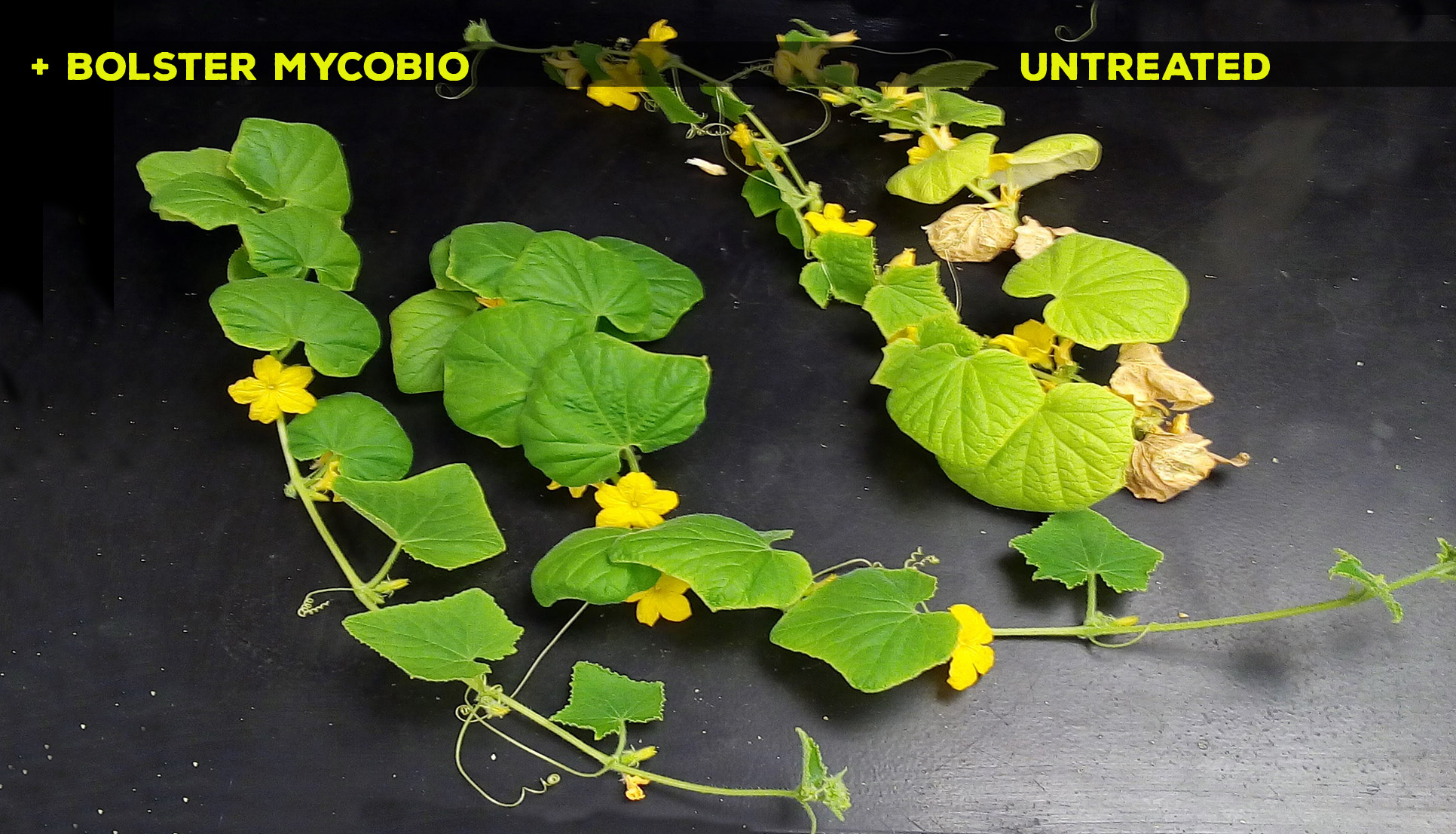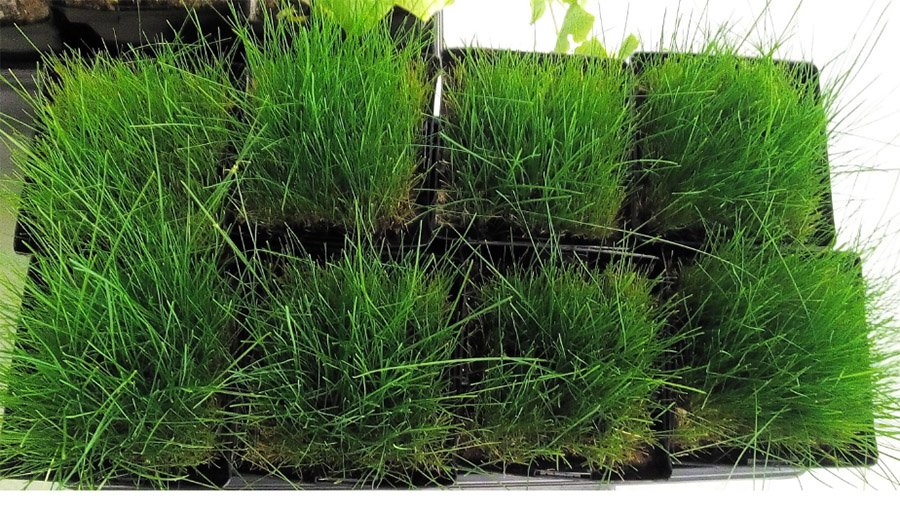Select ingredients for effective Mycorrhizal colonization, regardless of growing conditions
Suståne Bolster MycoBio is a specially formulated blend of endo-mycorrhizae and beneficial bacteria used for inoculating soils and growing media with the added benefits from compost and humic acid. This biologically charged granular soil amendment can enhance root growth for rapid plant establishment and increases nutrient use efficiency from seedling through maturity.
Use BOLSTER MycoBio for rapid and resilient seedling establishment. The BOLSTER MycoBio formulation supports the growth of diverse crops in all types of growing environments. Ideal for transplant production in greenhouse and nursery systems. BOLSTER MycoBio is ideal for application to new plantings of flower beds, landscapes, and turf grass.
Suståne Natural Fertilizer is backed by over 30 years of independent applied research on diverse crops and ecosystems. Unmatched by any other organic fertilizer manufacturer, such research is the foundation for developing products that deliver value under a wide variety of growing conditions. The superior performance of Suståne's products is recognized by growers from around the world.
Effective mycorrhizal colonization is associated with numerous soil and plant-enhancing effects, including improvements in soil structure, water use, and nutrient use efficiency. However, such benefits are not always observed due to differences in local soil conditions and variations in competitors' inoculant formulations.

Cucumber plants treated with Suståne BOLSTER MycoBio on the left vs. untreated control on the right. Plants treated with Suståne BOLSTER MycoBio show greater top growth and enhanced color.

Growth of Kentucky blue grass in response to different mycorrhizal formulations. Plants treated with Sustane MycoBio showed superior growth (left side) as compared to those receiving other test formulations (right side).
BOLSTER MycoBio is particularly useful at promoting rapid establishment of diverse plants in growing media, and in constructed soils. MycoBio also improves tolerance to stressed conditions. Best used in combination with a Sustane-based organic fertility program using an N:P2O5 ratio that is greater than 2:1 over the entire grow cycle.
Blend into growing media used for seed starting, transplant production and/or initial planting of rooted cuttings at 1 - 2 lb. per yd3 (.65-1.5 kg m3) of media.
Landscape and Garden Use
Apply ½ cup per gallon (64 g per 3.8 L) to fill dirt when planting shrubs or trees. In garden beds, use just 1 teaspoon (2.5 g) of material in each transplant hole for small flower vegetable transplants. Alternatively, apply in furrow using 1 lb.-2 lb. per 100 ft2 (1-2 kg per 100 m2) of soil when planting vegetable, fruit, or flower gardens.
Greenhouse/Transplant Production
For seed starting, transplant production, and/or initial planting of rooted cuttings, thoroughly incorporate into potting media using 1 - 2 lb. per yd3 (.65-1.5 kg m3). Increase to 3 lb. per yd3 (1.95 kg m3) when using propagation trays with < 20 cm3 cell volumes. For smaller planting volumes or planted containers, use 1.5 tablespoon per gallon (2.6 g per L) of potting media, or 1 cup per 2.8 ft3 (128 g per .26 m3) loose filled bag of media.
Lawn Establishment
Applied prior to or concurrently to seeding with any species of turf grass. Broadcast apply 2 to 4 lb. per 1000 ft2 (1.5 - 3 kg per 100 m2), then lightly incorporate into the seed bed.
*NOTE: Adjust fertilizer program for local conditions & requirements.
Store in a cool, dry place. Do not expose to moisture or extreme temperatures. For best results, use by expiration date printed on label.
| Item # BOLSTER MycoBio® |
Package Size | Units / Case | Units / Pallets |
|
FINE GRADE, 100 SGN
60-60-6061 60-60-6065 60-60-6060 |
1 lb. jar 6 lb. canister 40 lb. bag |
12 / case |
40 cs / pallet 60 cs / pallet 50 bags / pallet |

GUARANTEED ANALYSIS
CONTAINS NON-PLANT FOOD INGREDIENTS:
|
36.7% Compost |
|
|
Endo-Mycorrhizae Inoculant
Rhizophagus irregularis Rhizophagus clarus Septoglomus deserticola Claroideoglomus etunicatum |
84 spores/g 12 spores/g 12 spores/g 12 spores/g |
| Bacterial Inoculant Bacillus subtilis Bacillus pumilus Bacillus megaterium Bacillus licheniformis Bacillus amyloliquefaciens |
20,000 CFU/g 20,000 CFU/g 20,000 CFU/g 20,000 CFU/g 20,000 CFU/g |
Information regarding the contents and levels of metals in this product is available on the internet at http://www.aapfco.org/metals.html

